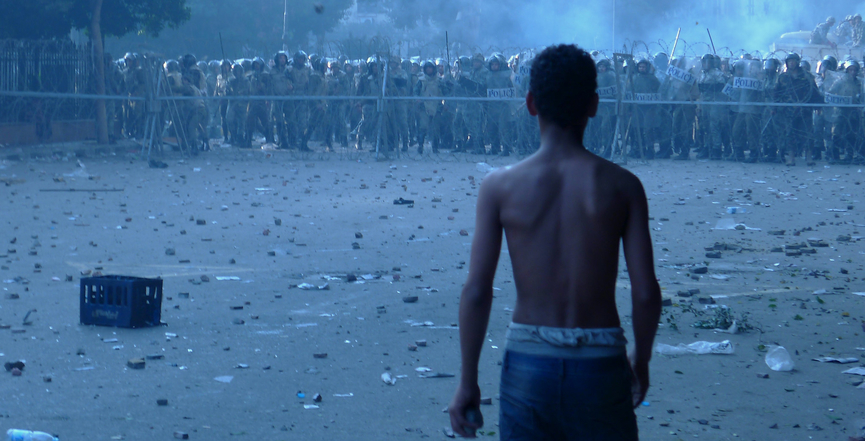What started as a seemingly a futile act of protest a decade ago transitioned into a fully-fledged revolution that engulfed the Arab world on a scale and ferocity never seen before in the region. Termed the Arab Spring, it was breathtaking in its immediacy and shocking in its early success. Suddenly, the stability paradigm in which the U.S. and the West invested so much to sustain crumbled and lost its cohesion and immunity without much warning. It had, in the process, exposed the logic of what Riccardo Alcoro, fellow at the Istituto Affari Internazionali, called the “‘original sin’ of the West’s stability-first policy” which was founded on the premise that, in the words of Carnegie Endowment for International Peace president William J. Burns, “strongmen are the optimal custodians of regional stability.”
While the Arab Spring came suddenly, it was not totally unpredictable. Historically, however, revolutions emerge as a result of the release and coalescing of the latent power contained in forces that are produced by millions of actions by countless individuals. Over time these forces find the opportunity to connect and start to produce the small waves which inevitably lead to the big waves, after which revolution suddenly emerges. This was also the case in the American Revolution, where the historian Bernard Bailyn in his book Ideological Origins of the American Revolution argued that there was a broader pre-revolution struggle between power and liberty.
Similarly, across much of the Arab world, the revolutionary conditions were present for many decades. There was a deepening problem with legitimacy for post-colonial regimes. From lack of political freedoms to low development and declining economic opportunities, the crisis of the Arab world has only grown worse with the passage of time. This has exposed, in return, the glaring ineptness of these regimes in addressing complex issues. Compounding those failures is the high population growth rates and the corresponding shifting of the demographic pyramid towards youth. Back in 2002, the UN Regional Human Development report concluded that the Arab world was “richer than it is developed.” In 2004, the same UN report issued a stark warning that failure to enact “comprehensive societal reform in Arab countries” could lead to “spiraling social, economic and political crises.”
So the Arab Spring signifies the arrival of a historical moment with huge potential for real change. It shares certain similarities with other historical shifts, as Harvard University professor Barbara Kellerman, points out in her essay “The Limits of Leadership in the 21st Century.” Fundamentally, revolutions serve as processes for redistribution and re-categorization of power and authority.
However, what is anticipated at the beginning of revolutions is radically different from what people find themselves in after the dust of the first wave settled. The challenge of historical moments like the Arab Spring is that it is easy for the events to overshadow the story.
Cognizant of the historical parallels between the Arab Spring and the American Revolution, historian Gordon Wood noted there was considerable doubt about whether America’s fledgling democracy would survive, and warned against a rush in judgement about the failure of the Arab Spring, reminding readers that it took Americans over a decade to figure out their own government.
Liberation is an iterative process rather than a singularity — a discovery often figured out too late by all those undergo this transformation. Rather than the land of milk and honey in the promised land, the Arab populations found anarchy and hard realities. The hardest of these realities is that the journey to the promised land is long and treacherous.
Today, it is becoming clear that this journey has reached a tipping point in its trajectory. It is an existential clash between two irrepressible forces. Across the Arab world, there is a deep cleavage within society. On one side, there are the revolutionaries who are fighting for a social contract based on a new order that redefines the value and structure of power, and that governs society based on democratization and equitable distribution of resources. Having tasted the freedom, they are determined not to go back to the shackles of tyranny, and pursue an all-embracing reformation to transform post-colonial autocratic societies into democratic ones. Some found inspiration in the words of the late Iranian revolutionary Ali Shariati, who called on Iranians to replace obedience with a “critical revolutionary, aggressive spirit of independent reasoning.” Driven by anger, they are not paralyzed by the uncertainty, but rather embrace it as they see the opportunity ahead.
On the other side, the vanguards and the gatekeepers of the old order are determined to impede the path of the revolution by all available means. Utilizing fear and anxiety about the change, they used the flawed logic of peace before justice to keep many immobilized. It is an example of what the philosopher John Stuart Mill called “the characters of reaction” that “inculcates submission to all authorities found established.” Submission to autocratic regimes was epitomized most recently by many elites and religious figures who were used to fight every dirty war in the Middle East on the side of autocratic despots.
There is no middle ground between the two, and the clash between them is inevitable. On the dawn of a new decade, the second wave of the Arab Spring is taking hold across Algeria, Sudan, Lebanon and Iraq. It is only becoming clearer that, to paraphrase Antonio Gramsci, “the old is dying,” but it is also evident that the new has not yet been born. The road to the promised land is still further ahead, and so the revolution lives on until then.
Abdul Nakua is a community organizer, activist, and a proud Canadian, Ontarian and Muslim of Libyan heritage. He is an executive with the Muslim Association of Canada.
Image: Alisdare Hickson/Flickr



